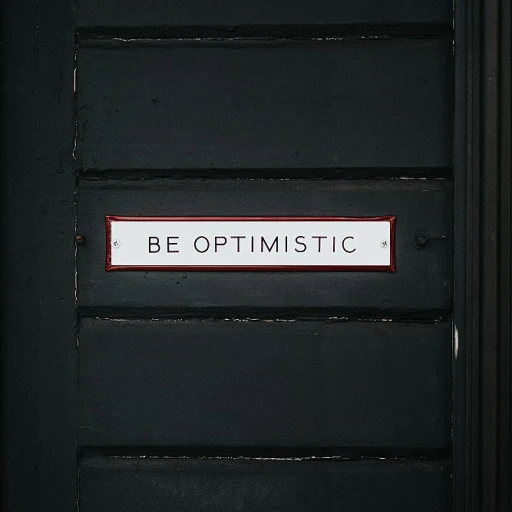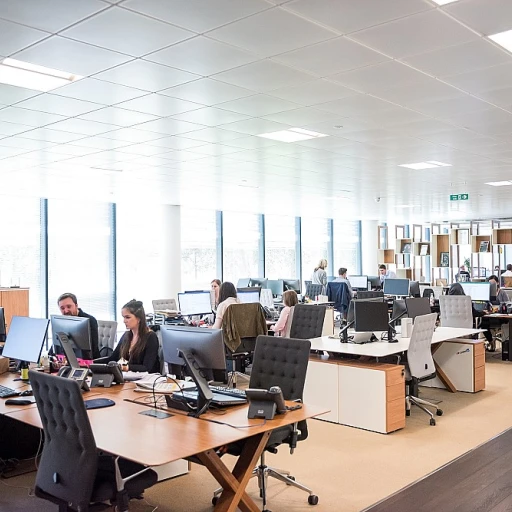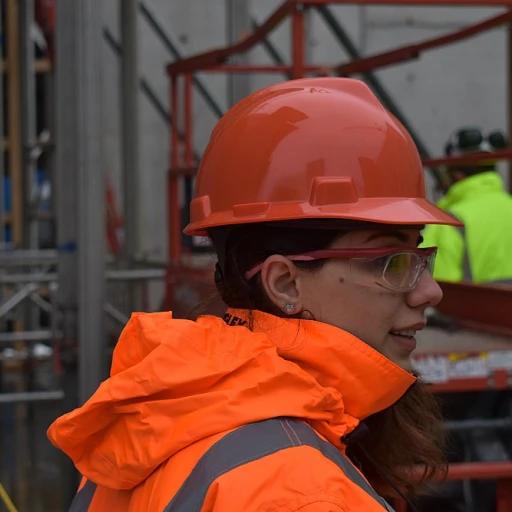
Understanding HRM Forecasting
Demystifying the Core of HRM Forecasting
Understanding Human Resource Management (HRM) forecasting is crucial for businesses striving to align their workforce with their strategic objectives. This process involves more than just predicting the number of employees needed; it encompasses a comprehensive analysis of workforce, demand, and resource planning.
At its essence, HRM forecasting seeks to predict future staffing needs by leveraging an array of data-driven strategies. This includes workforce forecasting and demand forecasting, which are integral to making informed decisions that support business goals. By analyzing historical data alongside current workforce conditions, companies can conduct effective trend analysis and gap analysis to anticipate future requirements.
Predictive analytics plays a pivotal role in forecasting. It combines data, statistical algorithms, and machine learning techniques to identify future outcomes based on historical data. With accurate forecasts, organizations can better align their human resources to meet business demands, ensuring they have the right talent at the right time.
Effective HRM forecasting not only aids in achieving long-term objectives but also enhances employee satisfaction and resource management. As businesses aim to stay competitive, the importance of strategic workforce planning cannot be overstated.
Moreover, exploring various forecasting methods and tools can reveal innovative ways to streamline human resource planning processes. By refining forecasting techniques, organizations can address frequently asked questions about future staffing and supply needs with confidence and precision.
Key Components of Effective HRM Forecasting
Essential Elements for Successful HRM Predictive Techniques
In grasping the importance of forecasting within Human Resource Management (HRM), it's crucial to recognize the components that contribute to successful predictions. Understanding these elements allows businesses to align their strategies more closely with their future workforce needs. Here are some of the key components to consider:- Current Workforce Analysis: To craft effective HRM forecasting, it's vital to assess the present workforce. This analysis involves examining employees' skills, roles, and productivity levels. Understanding the current human resource landscape helps predict future staffing needs, highlighting any gaps in skills or potential surpluses.
- Historical Data Utilization: Drawing insights from past records and employees' data is instrumental in accurate forecasting. Historical data provides a foundation for trend analysis and helps forecast future demand and supply, emphasizing resource planning's importance.
- Business Goals Alignment: Forecasting should always reflect the objectives of your business. Linking workforce planning with organizational goals ensures that talent acquisition strategies are relevant and equipped to meet both current and future demands.
- Incorporation of Demand and Supply Forecasting Techniques: Successfully predicting future staffing requirements involves demand forecasting to anticipate labor needs and supply forecasting to evaluate the availability of talent. Effective workforce planning requires balancing these forecasts to meet human resources demands.
- Predictive Analytics Tools: Leveraging predictive analytics tools can significantly enhance forecasting accuracy. These tools facilitate comprehensive trend analysis and gap analysis, enabling businesses to foresee staffing demands and plan accordingly.
Tools and Technologies in HRM Forecasting
Leveraging Technology and Tools for Enhanced Predictive Analytics
In the sphere of HRM forecasting, the use of advanced tools and technology has become indispensable. Integrating predictive analytics into workforce forecasting empowers organizations to better anticipate future staffing needs, identify talent gaps, and develop robust human resource strategies. Here are some of the key technologies enhancing HRM forecasting:- Data Analytics Platforms: Platforms dedicated to data analysis help transform raw data into actionable insights. They provide the analytical foundation necessary for predicting human resource supply and demand.
- Talent Management Software: Solutions designed for talent acquisition and management can significantly aid in forecasting future workforce requirements. Such software can streamline the process of aligning employee capabilities with business goals.
- Machine Learning Models: By employing machine learning algorithms, HR systems can predict workforce trends more accurately. These models continuously learn from historical data to enhance the accuracy of future predictions.
- Cloud-Based HR Solutions: Cloud technology offers scalability and flexibility, enabling remote workforce planning, real-time data access, and on-the-go analysis.
Challenges in HRM Forecasting
Addressing Complexities in HRM Forecasting
Forecasting the future workforce needs of a business can be riddled with complexities. Despite the best strategies and technologies, there are certain challenges that professionals encounter when managing human resource forecasts. To excel in workforce planning, it's crucial to understand these potential hurdles.- Data Quality and Availability: One of the primary challenges is ensuring that data is accurate and readily available. The predictions are only as good as the data they rely on. Organizations must focus on collecting high-quality historical data and integrating it into their HR systems.
- Dynamic Business Environments: Business goals and market trends are constantly evolving. This unpredictability can make forecasting future demand and supply of talent a moving target. Organizations will need to perform regular trend analysis and adapt their workforce forecasting techniques accordingly.
- Interdepartmental Collaboration: Effective human resource planning requires cooperation across various departments. Managing employee data, talent acquisition, and resource planning often involves multiple stakeholders, each with their own goals.
- Technological Integration: Embracing new tools and predictive analytics technologies requires time and commitment from employees. The transition to advanced HRM systems can be daunting, and ensuring adoption across the board is a known challenge.
- Skill Gaps and Workforce Capability: Accurately conducting a gap analysis to predict future staffing needs is critical yet challenging. Businesses must identify discrepancies between the current workforce capabilities and the desired future state.
Best Practices for HRM Forecasting
Implementing Proven Strategies for Accurate Predictions
In the realm of human resource management (HRM) forecasting, employing effective strategies is crucial for achieving accurate predictions. By utilizing a blend of historical data and predictive analytics, businesses can align their human resource goals with future workforce demands, accurately assessing employee needs and ensuring optimal talent management. Successful workforce planning requires the consideration of both demand forecasting and supply forecasting techniques. Demand forecasting involves predicting the number of employees needed in the future, taking into account business growth trajectories and anticipated project demands. Conversely, supply forecasting assesses the availability of current workforce resources and talent acquisition possibilities, which are essential for closing any gaps identified in workforce analyses. One vital aspect lies in understanding and leveraging trend analysis. By examining trends in employee performance, turnover rates, and recruitment success, HR professionals can adjust their forecasts to accommodate shifting dynamics. Continual analysis of these trends facilitates timely interventions and proactive management, preventing the gap between workforce supply and demand from widening.Effective Communication and Goal Alignment
A collaborative approach to human resource forecasting is essential for integrating business goals with workforce needs. Engaging in regular consultations with department heads and key stakeholders ensures that workforce goals align with broader strategic objectives. Open communication and precise guidelines help eliminate misunderstandings and anticipate future staffing requirements. Human resources departments should also engage in frequent cross-departmental meetings to synchronize forecasting efforts with the company's overarching business objectives. This approach promotes an environment where HR forecasting is not viewed in isolation but as a co-dependent process supporting business strategies and effectively meeting fluctuating demand.Monitoring and Reviewing Forecasting Methods
Regularly refining forecasting methods and techniques is vital for maintaining their relevance and accuracy. Methods such as forecasting simulations and scenario planning play a major role in predicting future workforce trends and demand fluctuations. Consistent evaluations of these methods enable organizations to adapt to demographic shifts, technological advancements, and changing economic conditions. Investing in resource planning tools that incorporate predictive analytics provides significant value in managing workforce forecasting and achieving desired results. These tools streamline data collection and analysis, offering insights that guide strategic human resources initiatives. By continuously monitoring and updating forecasting practices, businesses can stay agile and prepared to face future workforce challenges effectively. Employing these best practices ensures organizations remain proficient in predicting future workforce needs while aligning human resources strategies with their business goals. Efficient forecasting facilitates proactive management, optimizing talent acquisition, and resource planning processes that drive overall business success.The Future of HRM Forecasting
Projecting Forward: The Evolving Landscape of HRM Forecasting
Forecasting in human resource management (HRM) is venturing into uncharted territories, driven by continual advances in data analysis and predictive technologies. As organizations aim to align with ever-evolving business goals, harnessing the power of data in workforce forecasting becomes essential. Predictive analytics now plays a pivotal role as companies increasingly rely on trend analysis to anticipate workforce demand and supply more accurately. Several factors will shape the future of HRM forecasting:- Advancements in Technology: Innovations in predictive analytics and data management will continue to refine forecasting techniques, allowing HR professionals to make more informed decisions around talent acquisition and workforce planning.
- Integration of AI and Machine Learning: These technologies assist in automating repetitive tasks and enhancing the accuracy of forecasts by leveraging large datasets and continuously learning from historical data.
- Increased Focus on Employee Experience: As businesses recognize the value of employee engagement in retaining talent, HRM forecasting will increasingly consider human-centric factors in its analysis.













